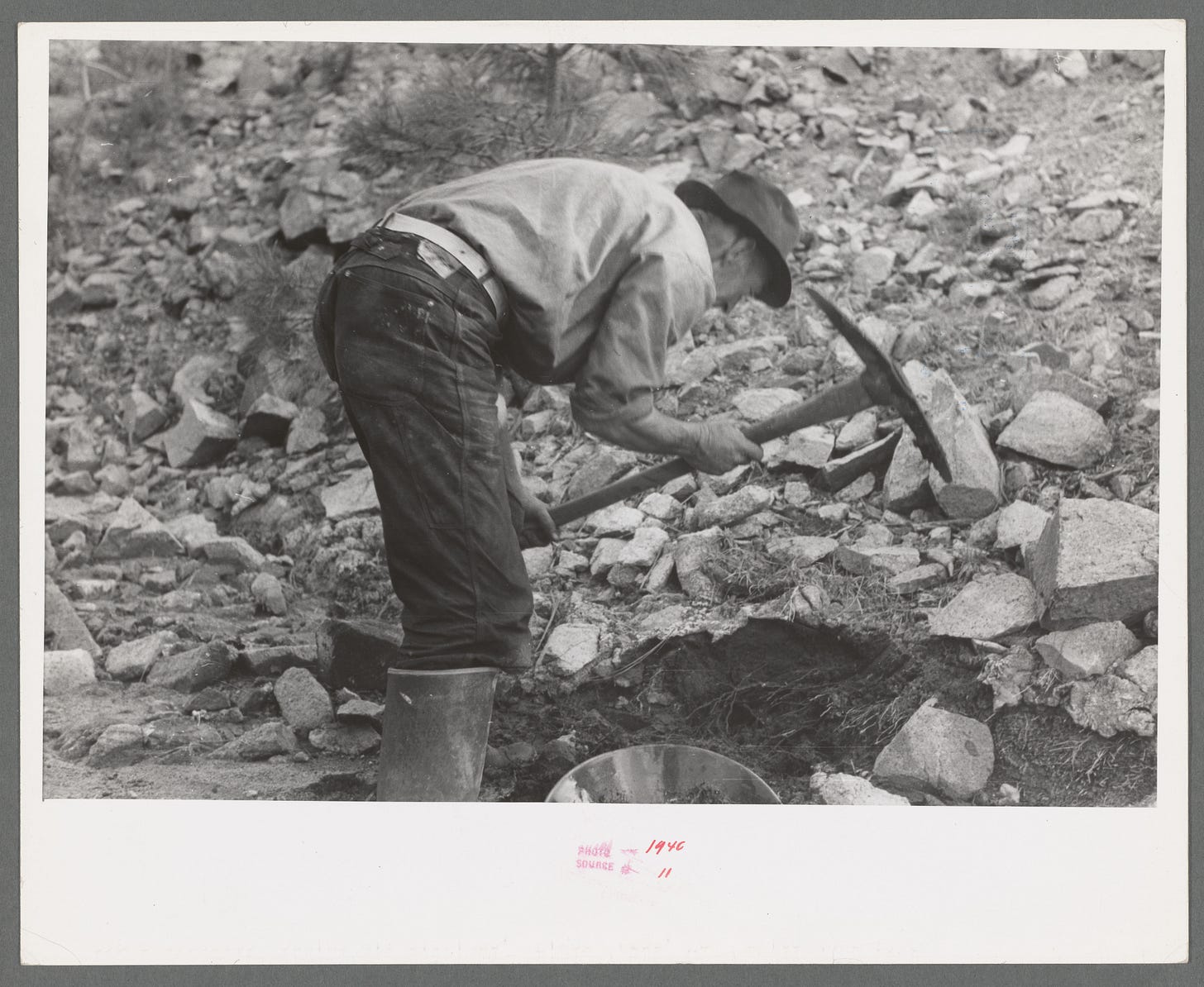September 2025: Digging Into a New Season
Unearth a little outdoor fun before you dig out your sweaters.
In this month’s issue:
Looking for an outside adventure that gets both your hopes and heart rate up? I’ve got a sparkling suggestion for you.
There’s a lot of shrimp talk happening lately. Here’s a little bit more.
“BRB” says the thousands of birds quietly leaving your backyard — use this tool to track their journeys!
Plus a few other nature notes.
According to my Instagram feed these past weeks, “August is the Sunday of summer,” the last chance to chase waves before the weather cools and responsibility returns. If that’s true, I guess September is the Monday of autumn — arriving faster than we expect, but urging us to slowly settle into a new routine.
The rough, dog days of summer 2025 had their hold on me in a way I did not entirely enjoy. Between consistently unsettling news and the combination corn-sweat heat-dome, I’m glad September’s arrival will solve one of these problems, even if autumn won’t feel in full swing until October.
As the busy days of summer wane, I hope you’ll take a chance to notice the outside is a little less loud, but just as enjoyable. In the past week, I’ve observed the number of morning bird calls dropping with the thermometer; turns out, fall migration is already underway (see this month’s Outdoorsy Extras on tracking birds as they leave your ZIP code). It seems vacation season is over for us and our avian friends.
Meteorological autumn began Sept. 1 — the date is a consistent way for scientists to track seasonal data. However, if like myself you are an autumnal purist, the day to celebrate is Monday, Sept. 22, when the autumnal equinox arrives in the Northern Hemisphere.
How to Get High Hopes (and Pocketful of Cool Rocks) at Crater of Diamonds State Park
It’s not often that I’ll advocate for you to carry a shovel into the great outdoors and start haphazardly digging, though it’s a must at this one Arkansas park. What you find there may be the most exhilarating underground treasure of all: diamonds.
Crater of Diamonds State Park is the only diamond mine in the United States, and believed to be the only in the world open to the public. After slapping down your credit card to cover the admission price ($15 ages 13+; $7 ages 6-12; free for the 5 and under crowd), you’re free to dig a hole as large as you’d like in search of diamonds, amethyst, quartz, and other minerals. And the kicker: anything you find is yours to keep, though for safety reasons you are required to fill that hole before leaving with your pocketful of finds.
For me, visiting Crater of Diamonds was one of those “That’s cool if we’re ever down that way!” adventures I didn’t think much about, but when you’ve got a 7-year-old at home on summer break begging to go, it’s hard to say no. And the allure of finding a precious stone that I could turn into jewelry? The idea was eventually too enticing to put off.
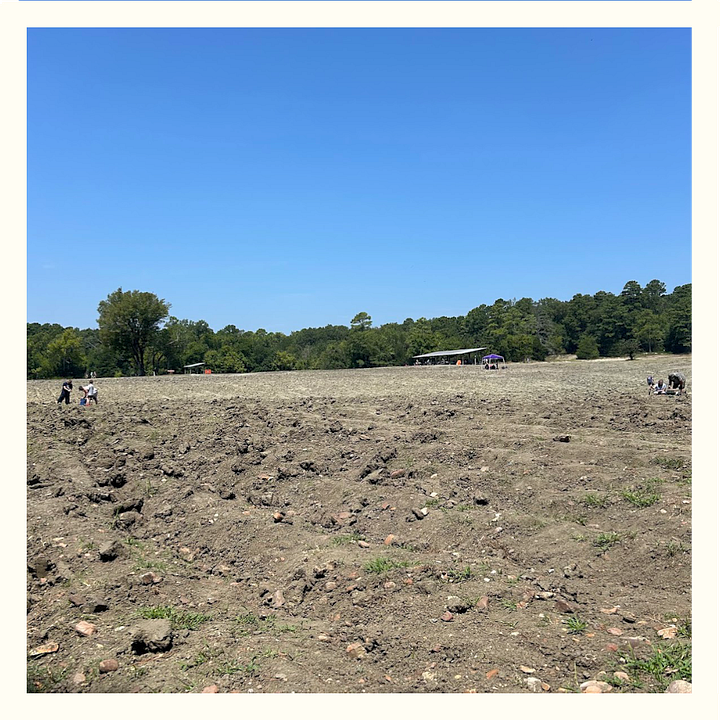
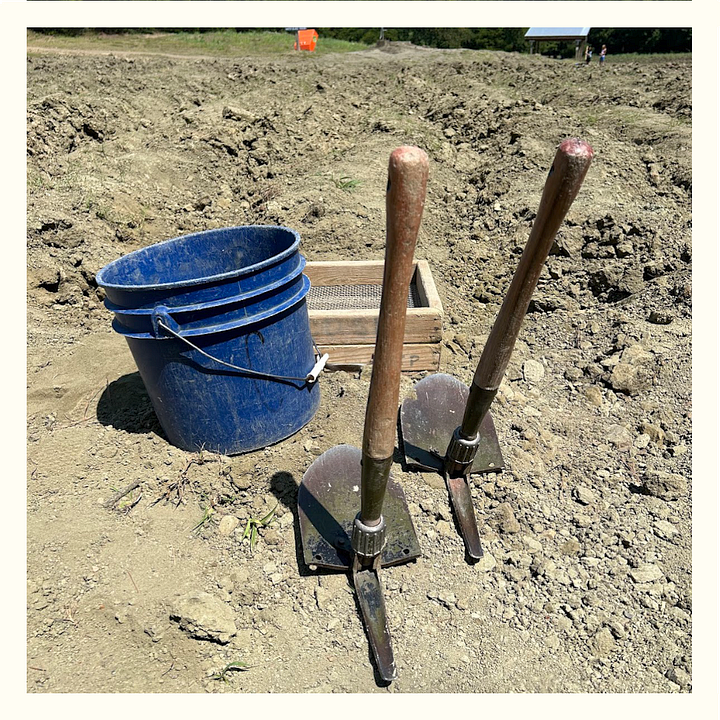
Four Facts About Crater of Diamonds State Park
Crater of Diamonds gets its name from being an actual crater. The site is a 100-million-year-old volcanic vent where magma once pushed diamonds up to the surface.
A farmer kickstarted the diamond craze. John Huddleston was walking his property in 1906 when he found the first diamond. He sold off his land to investors in the first of what would be many companies attempting to commercially mine there. Even the U.S. government took over the diamond fields during World War II as part of the war effort, though none of these ventures was ever really successful. Crater of Diamonds was designated an Arkansas State Park in 1972.
More than 75,000 diamonds have been found there, including the Uncle Sam Diamond unearthed in 1924. Weighing in at 12.42 carats, it’s the largest diamond ever found in the U.S. and is currently housed in the Smithsonian’s collection.
You can find three diamond hues in the park: white (most common), brown, and yellow (least common).
The Main Attraction: Diamond Hunting
If you’ve ever wanted to experience what the American gold rush felt like, this is the experience for you (except, you know, with diamonds). We watched an informational video outside the diamond field on how to spot gems in the rough, then headed to the equipment rental to get the basic gear: shovels, a bucket, and a screen set for sifting.
That may have been when the reality of “we really have to work for these diamonds” kicked in. Most diamonds at the park are found on the surface, helped along by staff who till the field every few weeks. Considering it had been a few days since the last churn, we took our chances by picking a random spot and settling in to sift through much of the top layer of soil, occasionally digging deeper when we felt like it.
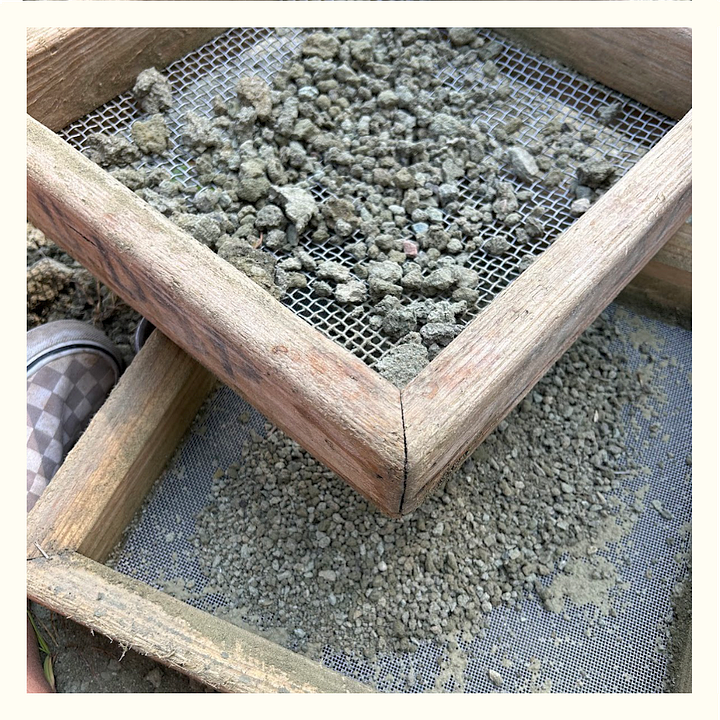
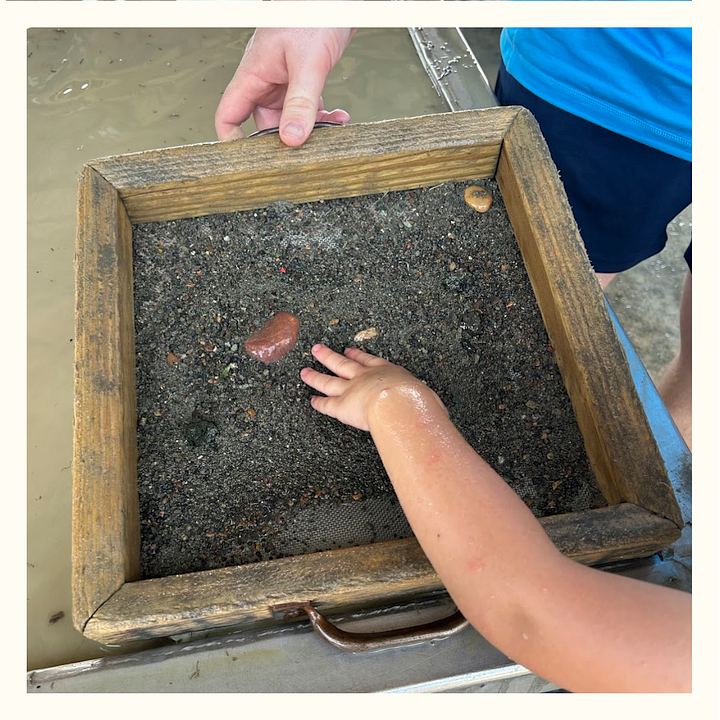
But here’s the deal about being deep in the diamond trenches: it gets exceptionally hot. Signs at the park’s visitor center warn that the heat index on the barren 37-acre digging field can climb even on cooler days — you’re essentially in the middle of a sprawling field with no shade. With that in mind, I’d highly recommend heading out to this one-of-a-kind spot when cooler autumn weather prevails.
Luckily, Crater of Diamonds provides two sluicing areas where you can wet sift through finer sediment in hopes of uncovering an overlooked diamond. To be honest, it was a nice way to cool down, and gave us a renewed interest in our dusty bucket of suspect rocks which revealed their own beauty once dipped in water.
After a few hours of digging, screen shaking, and lowered expectations, we wrapped up our adventure, returned our gear and stopped by the park’s rock and mineral ID desk. Park staff with more experienced eyes (and diamond certification credentials) go over your finds and put a name to all the pretty stones that aren’t as shiny, but just as special to you. We ventured home with a bag full of jasper, calcite, and volcanic tuff. No big rings for mama, but a truly unique experience I won’t forget anytime soon.
Crater of Diamonds State Park is located in Murfreesboro, Arkansas, about two hours southwest of Little Rock. The park is open daily from 8 a.m. to 4 p.m., and also offers a small children’s water park, well-kept campground, and two trails.
🪶 Say goodbye to your little bird friends. Slowly but surely, the birds you’ve listened to all spring and summer are quietly departing — mostly under nighttime’s protective cover. Check out BirdCast’s migration tool to get fascinating bird departure stats such as how many birds have already left your neighborhood, how fast they’re flying, and where they’re going.
🎟️ Visit a NPS site free of charge. About a quarter of national parks and historic sites charge entrance fees to cover the cost of upkeep and services — except on National Public Lands Day (Sept. 27). Use the NPS park finder to get outdoors for the low, low price of $0. This holiday is also one of the largest volunteer days at public greenspaces and is a great opportunity to support these sites through a difficult year of funding and staffing cuts.
🌻 Spot the last wave of blooms on a wildflower walk. Autumn leaves will soon offer some dazzling color pops, though this season still has floral bursts in store. Stroll along your favorite path to catch a glimpse of yellow ironweed, asters, black-eyed, ragweed (achoo!) and more in the weeks ahead.
🦐 These crustaceans aren’t radioactive, but they are doing other kinds of fission. North America is home to several species of freshwater shrimp, often named for where you may find them: the Mississippi grass shrimp, California freshwater shrimp, Ohio shrimp… you get it. These crustaceans know that autumn is cuffing season, the perfect time to pair up for once-a-year mating opportunities. Female shrimp attach their fertilized eggs beneath their tail and hind legs, where they hang tight all winter long until late spring when the shrimplets hatch.
🍇 Heartleaf peppervines (Ampelopsis cordata) are producing snacks, none of which you should eat. It’s a bummer these purple grape look-alikes are not at all for human consumption, but it’s not always about us, is it? Heartleaf peppervine is found near waterways and swampy spots, where its 25-foot tendrils wrap around trees and shrubs, helping to stabilize soil and stop erosion. This enthusiastic climber produces berries through October which are edible to fruit-eating birds… after all, there’s no reason they should be famished during the migratory season.
🏮 Fireflies were really out in the streets… er, woods, this summer. Remember those relentless spring rains? Turns out the deluges had one upside: boosting this year’s firefly populations. Ample humidity and heat helped firefly larvae survive underground, and made it easier for adult fireflies to produce the enzyme that creates their namesake light-up feature. However, researchers are sounding the alarm about dwindling firefly populations. You can help next year’s lightning bugs thrive by keeping some falling leaves in your yard to decompose, where that detritus creates a healthier ecosystem for firefly larvae and the bugs they feast on.
🐛 Meanwhile, female bagworms will be having a very demure autumn. Bagworms are voracious eaters responsible for chomping on cedars, maples, and a variety of other trees. After hatching in late spring, these tiny caterpillars (not worms!) feast and construct small spindle-shaped cocoons that dangle from tree branches. Male bagworms develop into moths, though females never do… nor do they ever leave their tiny enclosures. Visiting males mate through the bag and the female dies inside with her fertilized eggs. All those bagworm casings you spot on trees are tiny moth nurseries to hundreds of baby bugs, awaiting warmer days to break open. TBH, this whole life cycle is giving “Victorian-era novel à la The Yellow Wallpaper” vibes.
Fall Planting: Give a Tree, Shrub, or Perennial Plant a New Home
I adore fall gardening. By August I’m over a summer of weeding, watering, and groundhog patrols (the very things I’m itching to get back to come January, minus the whistlepig situation). But I get a second wind of sorts when temperatures ease and my favorite brassicas are ready to thrive. If you’re interested in cool weather vegetable gardening, check out a few of my favorite fall harvest recommendations.
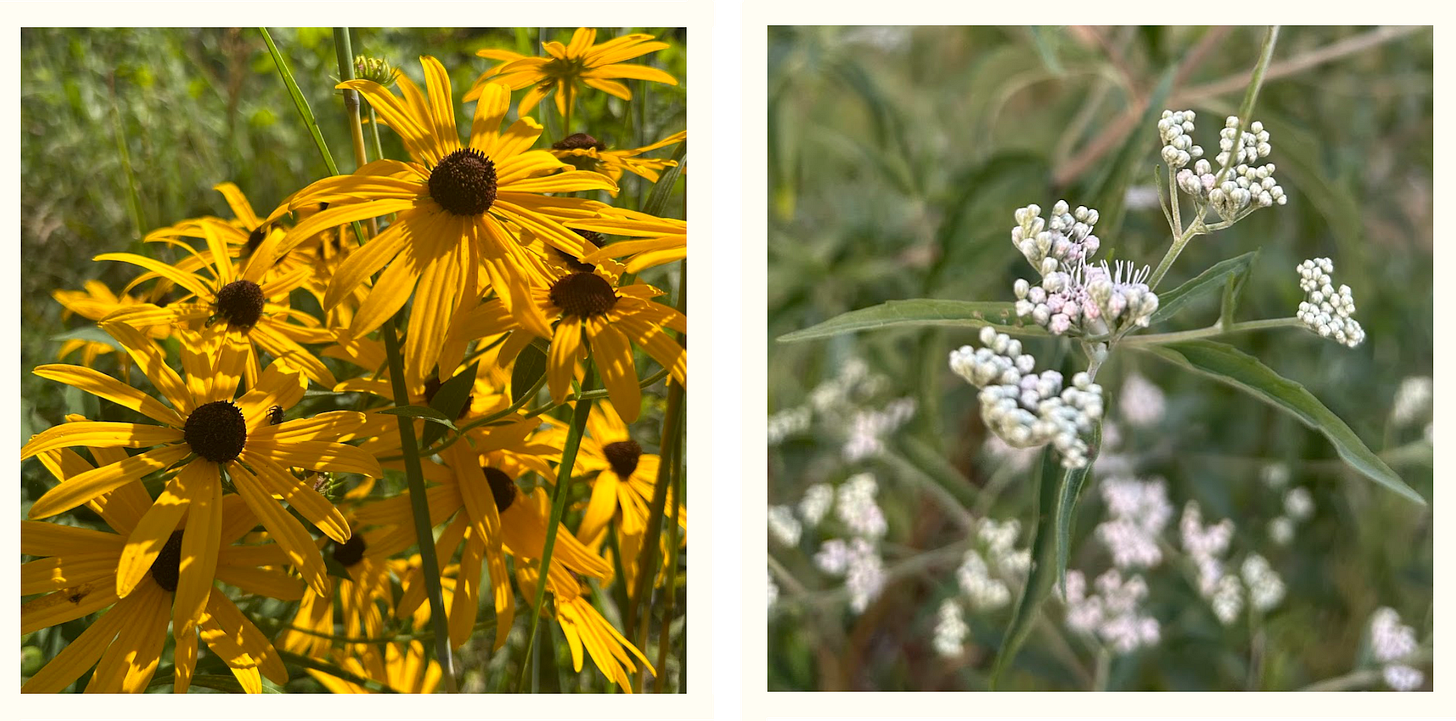
However, not all gardening has to feed us humans — sometimes you just want something pretty to look at. September is the perfect month for planting your very first tree, or adding a new perennial plant to your landscape. Planting after summer heat dies back can improve the odds your newest garden friend survives… so long as they’re into the ground six to eight weeks before the first frost. This gives plants and trees enough time to establish deeper roots that sustain them through winter dormancy.
A frost date calculator can help out if you’re unsure of just when frosty temps tend to arrive near you. If it’s been a while since you’ve checked your zone/historical frost dates, it’s likely time for an update. As many gardeners can attest, climate change has eeked away the accuracy of frost dates long-embedded in our minds — mine here in the Midwest has shifted 9 days later in the season over the past 10 years.
That’s it for this month’s edition of Outdoor Humans. I am so excited for the October issue, which will preview the official Outdoor Humans 2026 North American Nature Journal. It’s both a guide and journaling companion to spending more intentional time outdoors, complete with monthly astronomy, plant, and critter observing tips with spots to record your wanderings, hikes, and other adventures. I cannot wait to share this passion project with you!
As always, keep your wits about you and go the heck outside.
Nicole Garner Meeker
Art notes: This month’s feature image of a gold prospector “working his diggings” was taken in Pinos Altos, New Mexico, in 1940 by photographer Russell Lee for the U.S. Farm Security Administration. The photo collection documented life across America as the Great Depression continued on and as the U.S. entered World War II. Image courtesy of the Library of Congress.
Have a nature question? Your inquiry may be published and answered in a future issue of Outdoor Humans.
Have you subscribed? Clickety click, my friend. Or, share with a friend who needs to go outside and touch grass.



